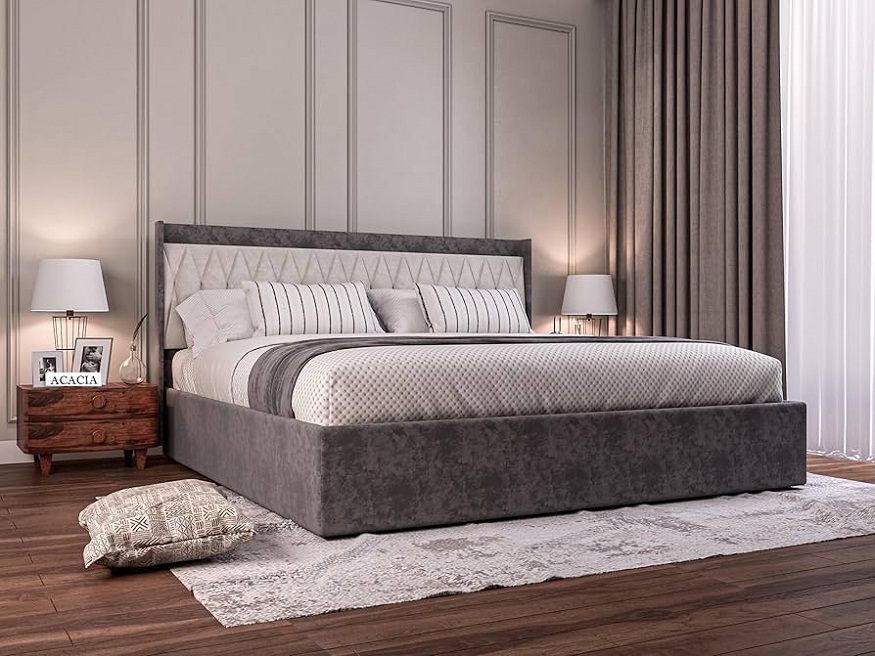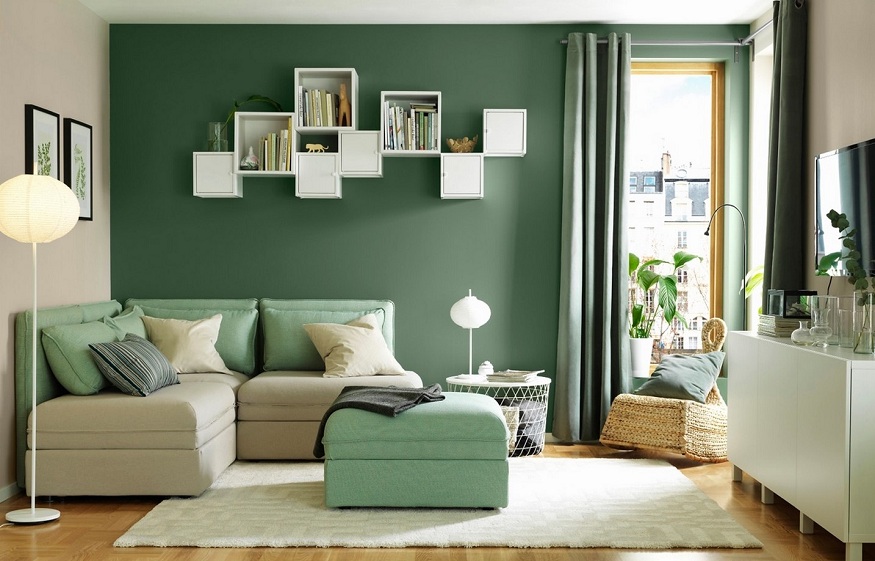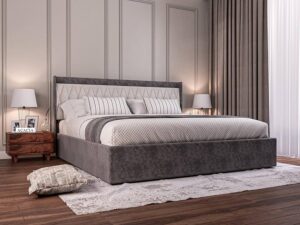How to Choose the Right Queen Cot for Your Bedroom Size and Style
Looking for a queen cot that does more than just fill space? The right one can anchor your bedroom, support restful sleep, and still leave room to move freely. But get it wrong, and you’re stuck with something that cramps your layout or clashes with how you actually live.
In Indian homes, where bedroom dimensions vary widely and furniture often needs to multitask, a queen cot offers a sweet spot. It’s large enough for two people to sleep comfortably, but compact enough to suit most floor plans.
Still, size alone isn’t the answer. Design, function, and proportion all influence how well your bed supports your lifestyle.
This guide breaks down how to choose the right queen cot for your space, which fits both physically and functionally.
Before you get carried away by style or brand, start with the space you have. Your room’s proportions will shape what works and what won’t.
The Space Dilemma
Start with the tape measure, not Pinterest. A queen cot may sound like a standard size—60 x 78 inches—but that’s only the shell—factor in the frame design, headboard width, and any footboard bulk. If your room can’t afford at least two feet of space around the bed, you’re setting yourself up for stubbed toes and regret.
It’s not just about floor space—vertical space matters, too. Ceiling height, window sills, and even fan clearance all affect how comfortable your bed feels in the room.
Pro tip: Lay a newspaper or tape on the floor to mark bed dimensions before buying. It makes the fit easier to visualize.
Once the size is reasonable, you’ll want to determine how high—or low—you want to go.
Grounded or elevated?
Low beds look sleek and modern. They work well in compact bedrooms and add a touch of minimalism. But they can be impractical for older people or those who prefer more under-bed storage.
Higher cots, on the other hand, are rooted in tradition and storage. They offer more airflow beneath the mattress and make getting in and out of bed easier. Choose based on what your daily habits demand.
Pro tip: If you’re short on storage and don’t want visible clutter, go for a raised cot with baskets or boxes beneath.
Next, consider the material. It’s not just about what looks good—it affects weight, durability, and even climate compatibility.
Material choices: wood, metal, or upholstery?
Wooden cots bring a sense of permanence. Sheesham, teak, mango—these aren’t just materials, they’re statements. They age well, match Indian aesthetics, and stand up to years of use.
Metal cots are lighter and industrial, ideal for rented homes or temporary setups. They are also easy to dismantle and transport.
Upholstered beds are for those who want comfort that doubles as luxury. But don’t forget: India’s dust and heat are tough on fabric frames.
Pro tip: Opt for solid wood or powder-coated metal for humid cities to prevent swelling or rust.
Now that the structure is clear, consider how the headboard plays into your bedroom’s design.
Headboards: style meets function
A cot without a headboard feels unfinished. Carved wood brings a vintage warmth, perfect for traditional homes. Tufted upholstery adds plushness—better if you’re a nighttime reader or weekend binge-watcher. Simple boards in laminate or veneer give a clean, contemporary edge.
Don’t just pick based on looks. Consider your routines. Where will your head rest? Will it clash with window height or wall switches?
Pro tip: Choose a padded headboard if you spend long hours reading or watching content in bed.
Your bedroom isn’t just for sleeping anymore. The right storage can help keep it clutter-free without adding extra furniture.
Storage vs. no storage
Hydraulic systems are great for lazy mornings and deep storage, but they’re heavy. Box storage requires lifting the mattress but gives segmented compartments.
No-storage cots allow airflow, make cleaning easier, and reduce weight during relocation. The ideal pick depends on how often you reorganise, shift homes, or deep clean.
Pro tip: If you clean frequently or move homes often, avoid hydraulic options—they’re not easy to shift.
A cot should fit the room—not just in terms of space, but in layout. Think about where it goes and what it might block.
Layout logic
Where does the cot sit in the room? If your bedroom is rectangular, position the cot along the long wall to leave space for wardrobes or dressing tables. Avoid pushing the bed into corners unless necessary. Beds need breathing room.
And always check: Will it block access to balconies, light switches, or plug points? These are little details that matter more than you’d expect.
Pro tip: Take a video walking through your room before furniture placement—it reveals blind spots better than still images.
A well-finished cot becomes the centrepiece of your bedroom. But the wrong shade can make everything else feel off.
Finishes and colours
Dark tones—walnut, mahogany—feel grounded, but can visually shrink a small room. Light wood—oak, ash—makes the room feel open and bright. In humid cities, avoid materials that warp or chip easily. Laminates or engineered wood are low-maintenance but don’t offer the warmth of real wood.
Whatever you pick, make sure it matches your existing wardrobe or side tables. Harmony matters.
Pro tip: Take samples or photographs of existing furniture when shopping. It prevents mismatched wood tones.
You’ve picked the frame, but don’t forget the surface you’ll actually sleep on.
The mattress connection
Not all cots suit all mattresses. Foam mattresses need firm, flat slats, while spring mattresses prefer slightly flexible support. Too wide a gap between slats can cause your mattress to sag.
Also, measure height. A high mattress on a high cot can make climbing awkward. And if your mattress covers the headboard, you lose comfort and visual symmetry.
Pro tip: Check the manufacturer’s mattress thickness recommendation. It ensures proper back support.
Even the perfect cot becomes problematic if it can’t reach your bedroom.
Move-in ready?
Buying furniture in Indian apartments means checking if the cot can actually reach your bedroom. Narrow staircases, short door frames, and tight turns are your enemies.
Opt for knockdown models if you live in a flat. They’re easy to assemble, repair, or move later. Modular designs are especially useful in nuclear families that shift homes often.
Pro tip: Ask for the cot’s delivery dimensions before ordering, especially if you live above the second floor without a lift.
Finally, step back. Look beyond aesthetics and ask, Does this suit my everyday life?
Lifestyle alignment
This one’s underrated. If your bedroom is your living room, office, and relaxation zone, your cot should reflect that. Look for queen cots with built-in shelves, wider side rails, or ledges for phones and glasses.
If your bedroom is purely for sleep, go simple. Instead of the furniture, let the linen, artwork, or rug do the talking.
Pro tip: Your bed isn’t just for sleep—consider how you use it between 6 a.m. and 10 p.m.
Conclusion
Choosing a queen cot isn’t about ticking boxes on a spec sheet. It’s about how you live, what you need, and what space you want to wake up in. A well-chosen cot doesn’t just fill a corner, it frames your day.
Don’t rush the decision. Your room deserves better than something bought in a hurry. Think through your morning routines, cleaning preferences, and your next potential move. That’s what makes the right cot.
Start with your room. Think through your routines. Then pick a cot that complements your life, not just your walls.













Post Comment
You must be logged in to post a comment.